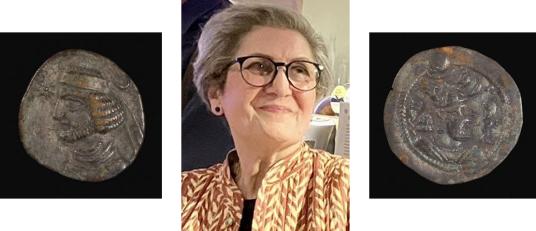Ilse and Leo Mildenberg Memorial Lecture: Rivaling Rome—Parthian and Sasanian Coins and Culture

Lecture Ilse and Leo Mildenberg Memorial Lecture
Harvard Art Museums, Menschel Hall, Lower LevelEnter at Broadway for evening programs
This event does not require a reservation; see further details below.
In this year’s Ilse and Leo Mildenberg Memorial Lecture, Vesta Sarkhosh Curtis, curator emerita at the British Museum, will share the story of a clash of empires.
From the beginning of the first century BCE, Parthia and Rome were rivals, both attempting to gain territorial and economic superiority of the region around the river Euphrates in Mesopotamia, which became more or less Parthia’s western frontier. This coincided with the emergence of the so-called Silk Routes, which placed Parthia in an important geographical and economic position controlling both the routes through the highlands of Iran as well as maritime trade along the Persian Gulf.
The Sasanian dynasty, which succeeded the Parthian dynasty in 224 CE, continued the same policy as their predecessors—to maintain control of the western borders and the buffer states—which brought them into collision with Rome and then Byzantium.
Both Parthian and Sasanian kings had the additional challenge of retaining their position as holders of the Kingly Glory and the right to rule their realm within the concept of kingship in the ancient Iranian tradition. Coins of these two dynasties featured, therefore, imagery and symbolism that emphasised divine support for the king of kings.
In this lecture, we will review the coin iconography, royal titles, and the art of the two ancient Iranian dynasties, as well as their rivalry with Rome.
Speaker:
Vesta Sarkhosh Curtis, Curator Emerita, The British Museum, and Vice-President and Honorary Director, The British Institute of Persian Studies (BIPS)
Free admission, but seating is limited and available on a first-come, first-served basis.
The lecture will take place in Menschel Hall, Lower Level. Doors to the hall will open for seating at 5:30pm.
Limited complimentary parking is available in the Broadway Garage, 7 Felton Street, Cambridge.
This lecture will be recorded and made available for online viewing; check back shortly after the event for the link to view.
The Harvard Art Museums are now offering free admission every day, Tuesday through Sunday. Please see the museum visit page to learn about our general policies for visiting the museum.
To honor the memory of renowned numismatist and scholar Leo Mildenberg (1912–2001) and his years of friendship with Harvard University, a fund was established by his friends and colleagues and endowed in 2005 by his wife, Ilse Mildenberg-Seehausen.
The Harvard Art Museums are committed to accessibility for all visitors. For anyone requiring accessibility accommodations for our programs, please contact us at am_register@harvard.edu at least 48 hours in advance.